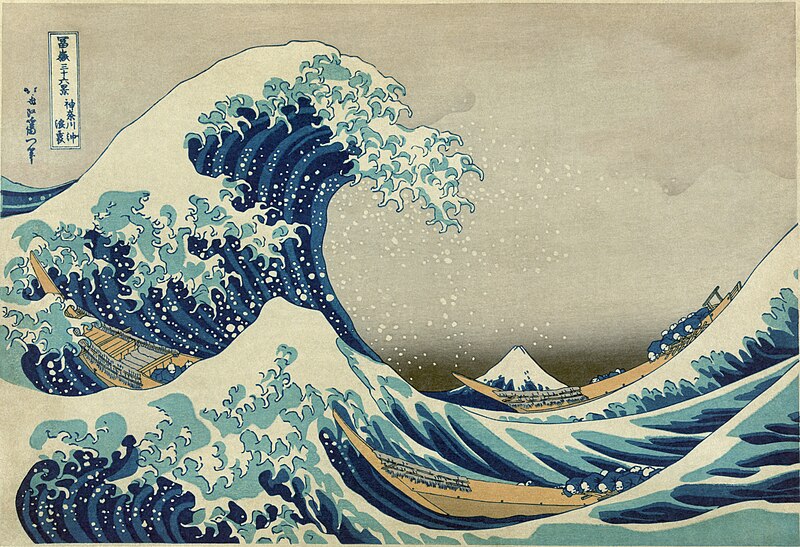 |
| Scale not to scale. |
Geochronology is usually considered a rather obscure topic for the public discourse, but maybe that is about to change. Monday’s New York Times ran an
editorial about efforts to demarcate a new geological epoch, a period of time usually lasting tens of millions of years and defined by a distinct set of global conditions. Previously, geological time periods have been determined primarily by the rock record (for example, the iridium-rich “K-T boundary,” a chalk layer that marks the end of the Cretaceous period and indicates the ash of the dinosaur-killing asteroid.) This proposed epoch, however, would be defined by a very recent, ongoing process: the busy activities of our own species.
Recognizing the “
Anthropocene,” as it has been called, would mark not only a major installment in the official record of the Earth’s history (as established by the
International Commission on Stratigraphy), but would also indicate a shift in the way we think about our relationship with the inorganic edifice of our planet. The new epoch, first proposed by Nobel-prize winning chemist Paul Crutzen, would be defined by the particular activities of our species that cause major global change and leave a measurable lithostratigraphic signal in the rocks of the distant future. This would include large-scale agriculture, the creation of major cities, the curtailing of global biodiversity, the alteration of sediment transportation by dams and mills, and of course the burning of fossil fuels and subsequent alteration of our atmospheric and oceanic chemistry. According to Zalasiewicz
et al. writing for the
Royal Society, who just published a theme issue on the Anthropocene, “current evidence seems to show global change consistent with the suggestion that an epoch-scale boundary has been crossed within the last two centuries” (Introduction 840).
There is strong support for this idea, even a budding consensus. The Geological Society of London decided in 2008 that the proposal was worthy of further investigation, and the Geological Society of America has hosted conferences centered around the question of
whether the Anthropocene should be added to the Geologic Time Scale. Some proponents note that the legitimacy of our current epoch, the Holocene (11,700 ya – present,) has been long debated, as evidence indicates that it may not be distinct, but simply an inter-glacial period in the middle of the
Quaternary Ice Age. In a sense, the Holocene itself may exist to provide geologists with a reference point for the modern age, something by which to classify the soils and rocks that are forming today (Zalasiewicz
et al. 837).
This debate is fascinating because it exposes a qualitative dynamic to our comprehension of Earth’s history. How do you decide what constitutes a distinct geologic age? Events like mass extinctions or planetary-scale glaciations seem like obvious benchmarks, but what about the finer differentiations? Rock formations differ from location to location- a layer of shale that European scientists designated as the dividing line between two eras may not be present in other continents. The International Commission on Stratigraphy reconciles these differences by comparing lithographic formations with the best available data on global climate conditions, but it is not a simple task. At some point, scientists have to make judgment calls on what events constitute chapter headings in the history of our world.
 |
| Does it begin with agriculture? |
 |
| Or maybe with industrial activity? |
The Anthropocene, for example, may arguably have begun at the onset of the Industrial Revolution, when human communities first started to harness the power of truly complex machines, generate power from the combustion of fossil fuels, and amplify their systems of production through increased efficiency. These ongoing processes are leaving tell-tale signals, from increased CO2 levels in the gas trapped in glaciers to measurably warmer global temperatures to landscape change caused by the growth of cities and suburbs. On the other hand, some scientists have argued that the Anthropocene may have started as much as 6000 years ago, when agriculture was first developed in the Fertile Crescent and began to change the balance of CO2 in the atmosphere. One might also argue you could approximately swap of the Anthropocene for the Holocene, because of the mass extinctions of North American megafauna (mammoths, giant sloths, saber-tooth tigers, and the like) that coincided with the arrival of humans on the continent.
 |
| Large cities leave a measurable signal. |
As far as the general public is concerned, the Anthropocene debate holds interest because it is happening adjacent to the highly politicized discussion about how we should respond to anthropogenic climate change. Some will inevitably respond with a roll of the eyes- “Here the researchers go again, politicizing the science to put pressure on the government.” Others will champion the would-be-epoch simply to implicate humanity for its carbon sins. Neither approach is the right way to see the problem- if we add an epoch, it should be to enhance our understanding of the planet and give us a vocabulary to explain it. The geologic time scale, like the system of taxonomy for biologists, is a human tool laid over a natural reality so complex that we can hardly comprehend it. If you lay a grid over a Monet in hopes of understanding his use of color and light, you are bound to miss some of the subtlety and detail. Still, you have to be impressed with the job researchers have done this far- after all, they are working with a singular masterpiece.





